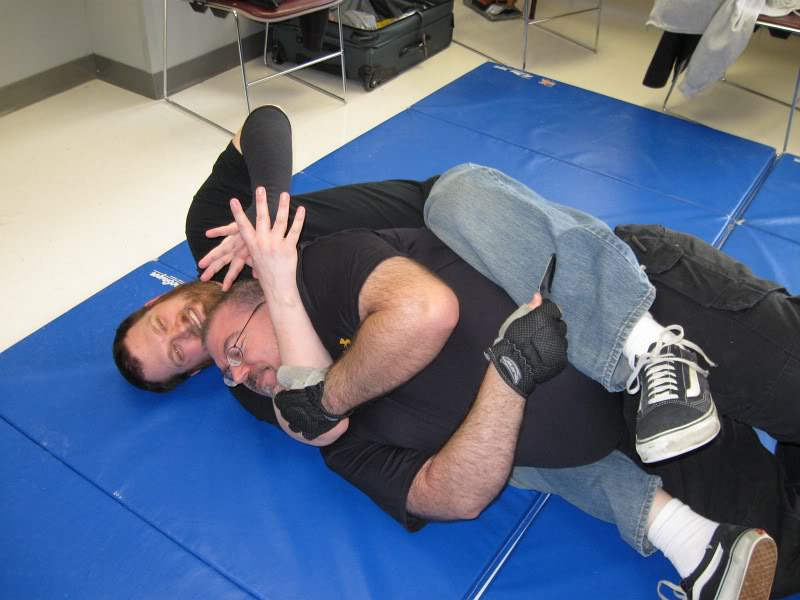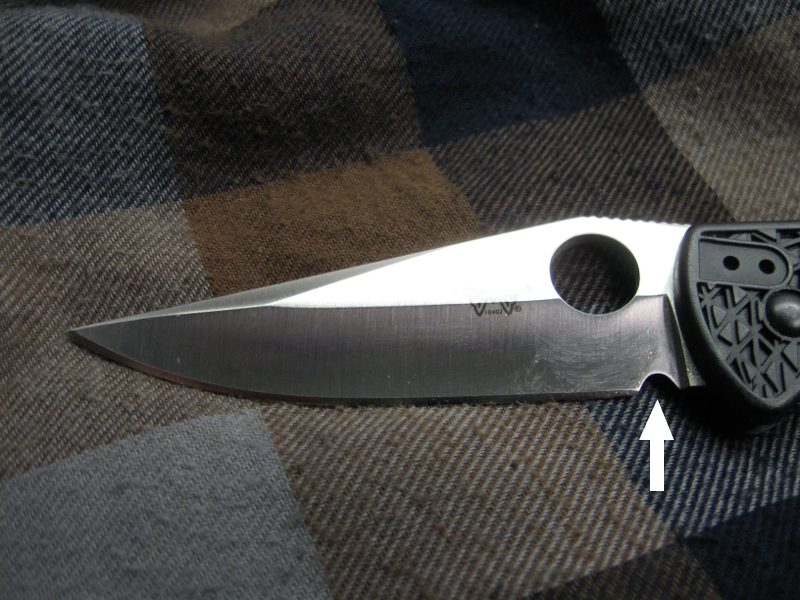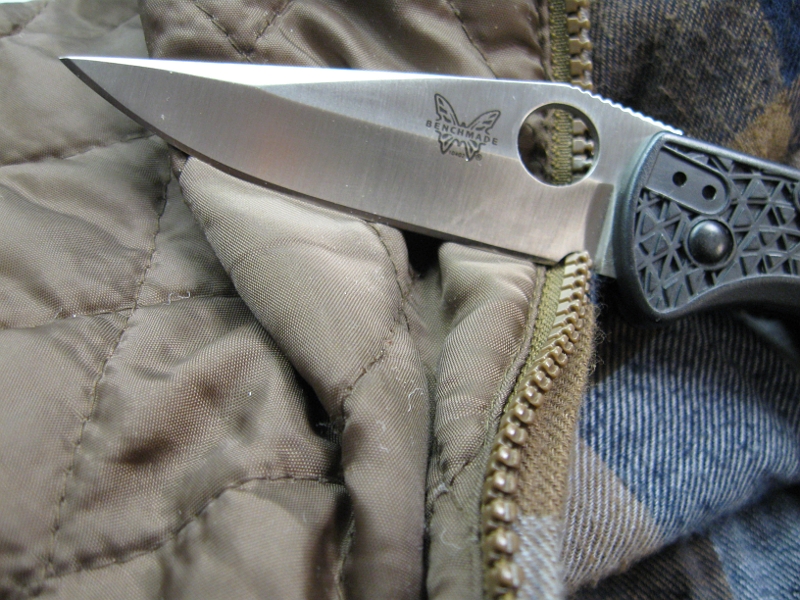A defensive folding knife is, like all weapons, a force multiplier. It is a tool, like a lever, that amplifies force. Using a knife it is easier to apply damage to another human being. That is the function of a blade: Using an amount of pressure that would not normally cause any damage whatsoever with your fingers or your palm, you can deliver a serious, even lethal wound using a sharp knife.
Knives, then, are particularly useful when cutting your way out of a grappling situation. One of the organizations with which I’ve trained, Insights Training Center, offers classes specifically in dealing with grappling and groundfighting threats when armed with a blade. The course, at its most fundamental level, teaches you how to deploy and use your knife while under pressure — in other words, while being choked, mounted, or otherwise attacked.

One of the (pardon the irony) insights offered by instructor John Holschen when I took this course was to check the knife you carry to see if it has a notch at the base of the cutting edge. This is a more common feature on knives than you might think. It’s also something you do not want.
What’s the problem? When drawing the cutting edge through, well, an opponent, that notch can cause the edge to hang up. It does so specifically because it draws the material being cut up into the unsharpened notch, preventing the sharp edge from pushing through and continuing its separation of the “work.” Imagine, if you will, drawing your self-defense knife through an opponent… only to have your knife hang up on the zipper of his jacket.
If your favorite knife has this notch, it isn’t the end of the world. You should, however, consider carrying a different blade if that knife is to see duty as a self-defense tool. There is no point in making the task of success in self-defense more difficult than it needs to be.


good article, i always do enjoy these sorts of tidbits. Ive been carrying a cold steel Scimitar Spike, not a folder but i love it so far.
what are you carrying now a days?
For the last few days, my daily carry has been the Benchmade Pika II you see here. It changes frequently because I’m always evaluating something.
Excellent article – two questions arise.
1. Would it not be possible to use a Dremel or a plain file ( cooling the blade often to avoid temper changes) to smooth out the notch on the forward edge, making it more ‘slippery’ and less prone to catch or hang?
2. Does your commentary mean that a sharp, piercing point would be one of the most desirable features of a defensive knife for EDC? I have several good locking blade types by CRKT, SOG and others, but they all have a more sweeping leading edge, not as needle-pointed as your photos. Would it be good to consider a more ‘pointy’ EDC?
BTW – glad I found your newer site; have had only sporadic online time for last year, due to some family illness, but ran across it today and it’s still excellent. Keep it up.
RE: Points on EDC may have to be used for Self Defense blades.
There are very few locations on the anatomy that a short-bladed knife can reliably get into the vitals of the human body and those locations are difficult to access in a fast moving self defense situation.
For that reason we emphasis a specific type of cutting motion called the “draw-cut-tip-drag” (DCTD) as our primary technique for defensive knife usage. With the DCTD the shape of the point is relatively insignificant.
John Holschen
Insights Training Center
Re The Notch:
It doesn’t take a zipper to get caught in the notch.
On most knives the notch is unsharpened this means that any (somewhat heavy) cloth material can get caught in the notch.
The first time I ran into this was with a Strider SNG. As I rotated the blade through the denim (blue jeans) into the meat of the cutting dummy the knife caught and almost pulled the pole out of the hands of the two guys holding it.
Look at pictures of Striders and you will see that this notch is prominent and on some models almost looks like it was cut at the best angle to catch.
http://www.g3l33m.com/knives/striderCustoms.htm
FYI the notch is there for sharpening purposes. It provides an indent for the rod/stone that allows even sharpening of the entire edge surface. Lack of a notch is why you see so many traditional knives (be they slipjoints or fixed blades, whatever style) often come resemble one of those long, extremely slim fillet knives after a while. Repeated sharpening on blades without a notch results in uneven steel removal due to the handle/scales getting in the way near the base of the blade, and will eventually turn your blade into that almost L-shape seen on many old knives.You can work around the lack of a notch with enough skill and patience, but even then it still depends on the knife.
.
That being said, designers these days often match the notch far bigger than it needs to be for stylistic reasons; or put one in as a sort of de facto choil. Bottom line I guess it only needs to be a few mm deep to serve its purpose, and if it’s big enough to stick a finger in and/or get bunched up in the cutting material that’s bad design. I just wanted to make the point that some kind of notch at the blade base is actually a feature I look for, as someone with 30+ years in knife collecting, precisely because it enables proper, even sharpening.